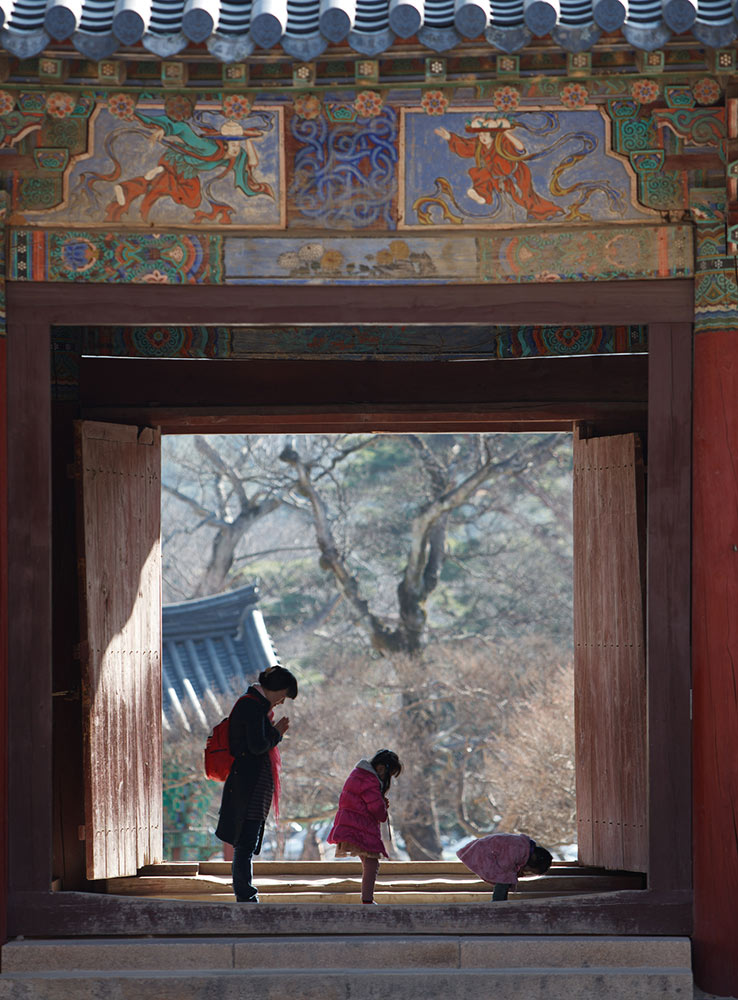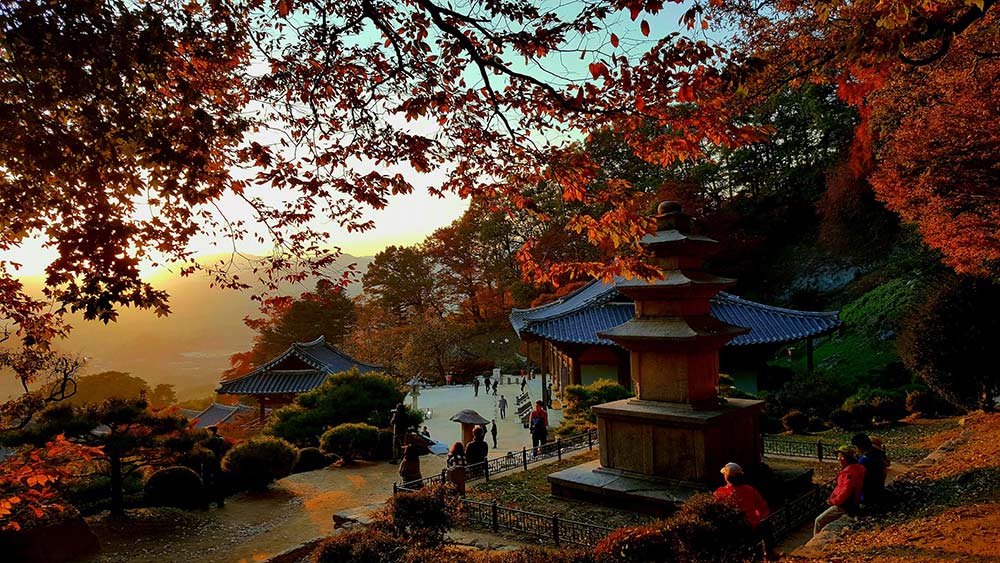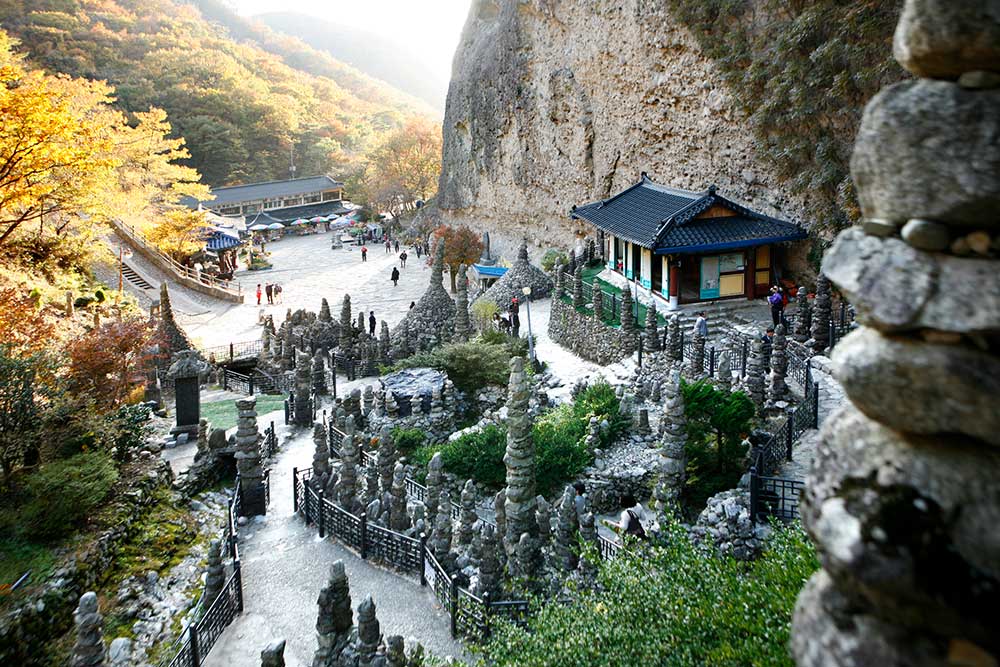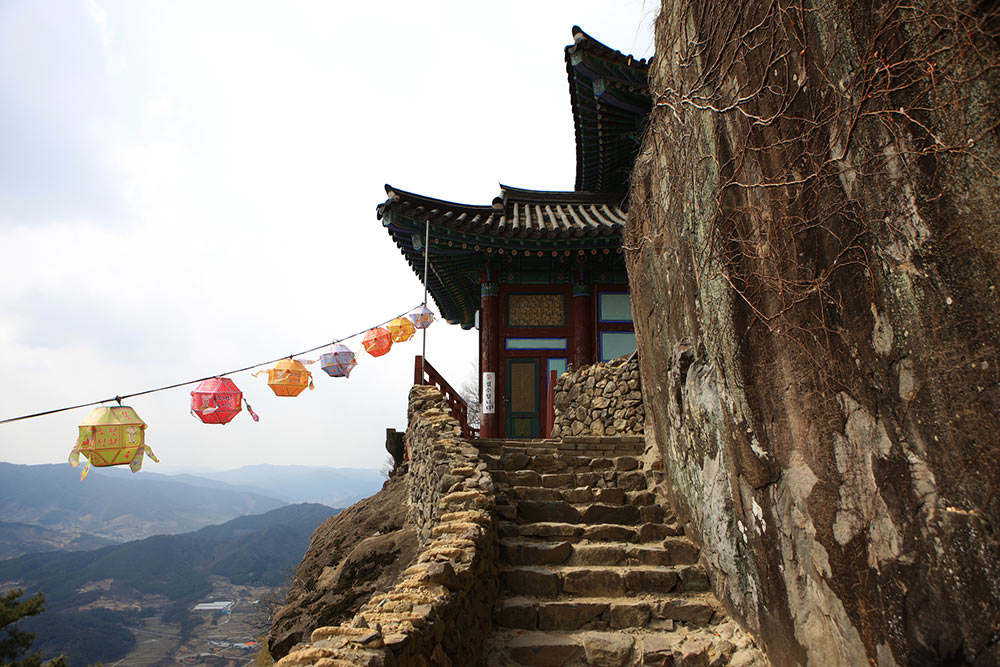Top Ten Temples to Visit in South Korea
There are about 900 traditional Buddhist temples in South Korea – how do you choose where to go?
Each temple is unique and has a colourful history, often having withstood changes in rulers, war and the elements. Today they house South Korea’s treasures and provide an insight into the culture and story of South Korea and are well worth exploring.
Many have been built in places believed to have the best pung-su (feng shui) and so you’ll find temples in stunning mountain areas, lush forests or along coastlines.
If you are looking for a humbling experience, these places of worship can allow you to find an allusive inner calm and immerse yourself in the history of the region.
And, if you choose to take up one of the Templestay experiences, you can practice Buddhist techniques such as meditation under the guidance of a local monk.
Here are 10 not to miss.
Hwaeom-sa Temple – host to national treasures
Found at the foot of Jirisan Mountain and considered sacred to the Korean people, the Hwaeom-sa Temple houses cultural relics identified by the Korean government as ‘national treasures’. It’s also a holy place where followers come to seek enlightenment. Built in 544AD, the temple itself is a place that enjoys the ‘harmony’ of Seomjingang River’s breeze and Jirisan Mountain’s fog – the mountain fog is thought to give the temple a mystical aura. (pictured above)
Tongdo-sa Temple – one of the Three Jewel Temples of Korea
Tongdo-sa is the largest temple in Korea located in Gyeongsangnam-do and is considered as one of the Three Jewel Temples of Korea. The temple is famous for its lack of statues and is often called ‘the temple without a Buddha’. There are over 50 temple buildings inside the compound. The courtyards in the temple are structured around several pagodas and a Buddhist altar where the relics of the Buddha substitute for a statue. Master Jajang brought the relics, including part of the Buddha’s robes, from China and enshrined them in 646AD. The name of the temple means to ‘Pass through to Enlightenment’. The river valley and forest near Tongdo-sa are considered an ecological paradise.
Jogye-sa Temple – stunning golden statues
Jogye-sa Temple dates back to the late 14th century and is one of the most important Buddhist temples in Korea and a symbol of Korean Buddhism. Jogye-sa Temple is located in one of the most popular cultural streets in Seoul, Insa-dong, near the Gyeongbokgung Palace. The magnificent golden statues of Amitabha Buddha, Shakyamuni Buddha, and Bhaisaiya Buddha are the first thing you notice when you enter. These golden statues measure in at over 4.8 metres tall. Also found inside the temple grounds is an ancient white pine tree, listed as number 9 on the Natural Monument List. The best times to visit Jogye-sa Temple are Buddha’s birthday or during the Lotus Lantern Festival when the courtyard of the temple is decorated with paper lanterns.

Colours of Hope at Jogyesa Temple in Seoul, South Korea ⓒPhotographer Milana Agijew Korea Tourism Organisation
Sinwon-sa Temple – famous for its lotus flower pattered tile
Sinwon-sa Temple is located in Gongju and is one of three main temples in Gyeryongsan Mountain along with Donghak-sa Temple and Gap-sa Temple. Sinwon-sa Temple is an old temple rebuilt by the Buddhist priest Bodeokhwasang in 651AD and is famous for its lotus flower patterned tile. Gyeryongsan Mountain was chosen as the site for the Jungakdan (Central Peak Altar) on the Sinwon-sa Temple grounds because it is one of the country’s highest and holiest mountains, in addition to other cultural assets including a five-story pagoda (Local Tangible Cultural Asset number 31) and an octagonal Budo.
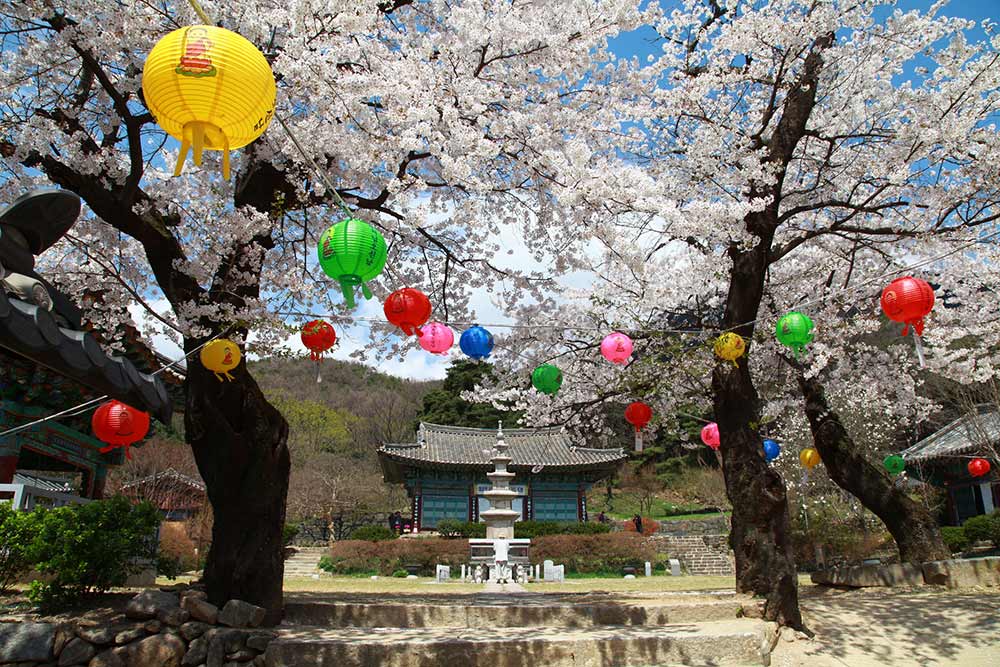
Sinwonsa Temple in Gongju, South Korea in spring. ⓒPhotographer Yu Yu sun Korea Tourism Organization
Haedong Yonggung-sa Temple – mystical occurrences
The Haedong Yonggung-sa Temple in Busan is well worth a visit as it is one of the country’s few temples located by the ocean and is the perfect place to catch the sunrise. This unique temple was first built in 1376 and is visited not only for its unique location but also its mystical occurrences. A highlight is to see it decorated in paper lanterns for Buddha’s birthday.
Seokbul-sa Temple – Buddhist reliefs carved into stone walls
This intimate hermitage is built into the sides of sandstone cliffs of the highest mountain in Busan – Geumjeongsan Mountain (Busan National Geopark) and features meticulously etched Buddhist reliefs carved into the stone walls. You can reach Seokbul-sa Temple either by hiking or the Geumgang Park cable car – (if your legs have lost their enthusiasm) and the temple provides great views over Busan.
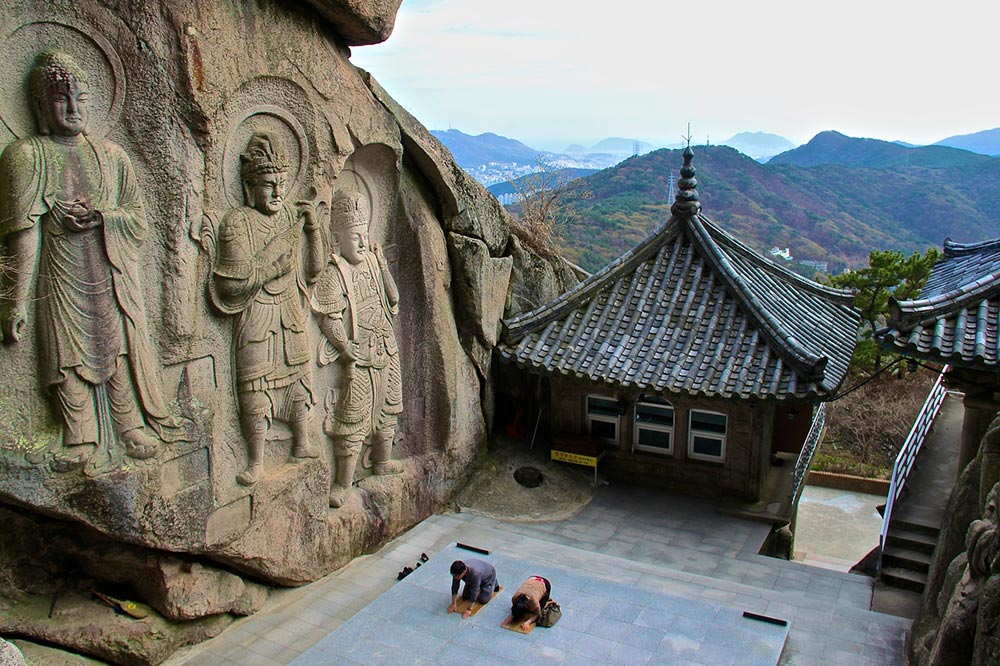
Mountain prayers at Seokbulsa Temple in Busan, South Korea ⓒPhotographer Nina Staer Nathan Korea Tourism Organization
Buseok-sa Temple – home to five national treasures
Buseok-sa Temple in Gyeongsangbuk-do counts five national treasures among its cultural assets and is one of the 10 largest temples in South Korea. National treasures include a stone lantern, seated clay statue, a wall painting, and two halls. The Muryangsujeon Hall of Buseok-sa Temple (South Korea’s national treasure number 18) is one of Korea’s oldest wooden buildings. The Buseok-sa Temple is also known as the ‘Temple of the Floating Stone’.
Cheongnyang-sa Temple – surrounded by dramatic rock formations
Cheongnyang-sa Temple in Gyeongsangbuk-do stands in front of a rock face between countless mountaintops and bizarre rocks. Cheongnyang-sa was built by the great monk Wonhyo in 663AD and is home to two precious historical relics. According to the principles of feng shui, the area is an ideal place for a temple – with the 12 mountain peaks surrounding the temple like the petals of a lotus flower. Many legendary scholars such as Toegye Yi Hwang and the Great Monk Wonhyo have studied at this temple. A visit should also include an outing to the eight caves named after those who have studied here.
Tap-sa Temple – an architectural mystery
Mystery surrounds the science behind the Tap-sa Temple in Jeollabuk-do. How for example its countless century-old stone towers were built without any glue, cement, or furrows? Despite typhoons and strong winds some of the 80 stone-stacked towers are more than 15 meters high but have not faltered. It is said that a scholar in the 19th century first built a stone tower here while saying purgatorial prayers for all of humankind. Depending on the season, once you’ve finished exploring the Tap-sa Temple make your way to the cherry blossom road 500 meters below the temple.
Saseongam Small Temple – impressive views
At Saseongam Temple it’s easy to see why this hermitage was built as the views over the Seonjingang River and Jirisan Mountain are spectacular but be prepared as it is a climb. Saseongam Temple in the province of Jeollanam-do is said to have been built in 544AD and is also known as the Hermitage of Four Saints. Many of the buildings are set against steep granite cliffs and amongst unique rock formations. Lodged in between large rocks, the small temple features a beautiful and steep stone staircase adorned with tiles.
Temple Stay Program
The South Korea Templestay program is the ideal way to immerse yourself in the full temple experience. There are around 100 temples across the country that provide overnight accommodation including meals. It’s an opportunity to learn about Buddhist practices such as meditation and the 108 prostrations and the chance to experience the life of a monk, while also staying in some beautiful places. For more information go to www.templestay.com
The low down


